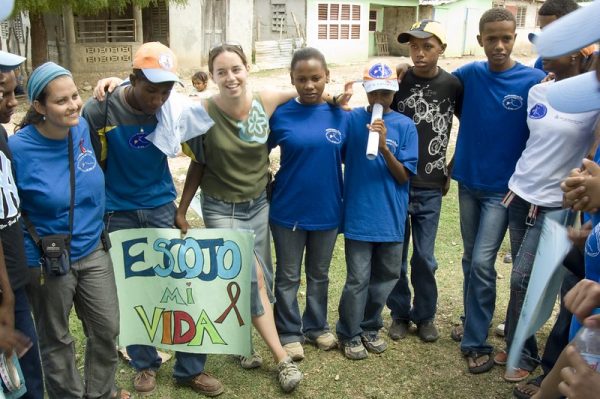This article originally appeared on The Conversation on May 14, 2020 and has been republished under a Creative Commons license.

Tom Werner/Getty Images
At Troy University in Alabama, students went online to help a county with a high infant mortality rate in the state of Georgia to analyze health disparities and develop solutions.
At Cornell University, where I teach, law students are providing legal services online to death-row inmates in Tanzania and children and young farmworkers in upstate New York.
At five state universities in the U.S. heartland, students are helping Michigan towns create government websites.
These are all examples of “e-service learning” – that is, service learning that takes place online. Service learning refers to a wide range of student experiences meant to help a community organization, local government or business.
I am an education researcher and – along with my colleague Yue Li – I am investigating the best ways to engage students in e-service learning, both here in the U.S. and around the world.
Even though colleges and universities have shut down their campuses due to COVID-19, e-service learning shows how college students can still do their volunteerism in the virtual world. Students need not be physically present to help support local government, local nonprofits and vulnerable individuals like farmworkers, all of whom have a greater need for the help of volunteers due to the COVID-19 pandemic.
Vast benefits
Service learning is not meant only to help community organizations, governmental agencies and businesses. It’s also meant to advance the student’s individual academic goals.
A key part of service learning is for students to reflect on the service they actually do and how whatever they are studying – whether it be health, law or the environment – relates to the real world. Reflection also helps students clarify their personal values and gain a sense of civic responsibility.
Better outcomes
Compared to peers who didn’t do service learning in college, graduates who did participate in service learning report higher levels of civic-mindedness. That is to say, they are more likely to work with others to achieve public goals.
For community organizations, the benefits of having college students help
with their work are vast. Students can offer companionship for elderly clients, become role models for high school students or simply serve as an extra hand to tackle a nonprofit’s back-burner project.
Research applied
Through e-service learning, communities can gain access to the latest university research. For instance, residents of Gracias Lempira, Honduras, and Rohne Village, India, used engineering research to build electricity-free water purification systems. And in Louisville, Kentucky, students from several universities created models to help residents decide where to plant trees to cut down on air pollution.
Each partnership has unique benefits. For instance, an official at an international climate action group – Team 54 Project International – remarked on how a Cornell University student played a key role in gathering information for a tree-planting guide. The guide will be used to help plant trees in Serbia that are suited for the region. The guide will also serve as a template for similar tree-planting projects around the world.
Is virtual the same?
Can students still have a meaningful service learning experience in cyberspace?
A study of business marketing students shows that students who engaged in online service learning gained the same skills, such as the ability to work well with others and understand cultural and racial differences, as those who worked alongside their partners in person.
Back in 2013, some university scholars predicted that online technologies would disrupt in-person university teaching as it was known, including service learning.
What I have found is instead of disrupting in-person teaching, e-service learning has enhanced it. It does this by offering opportunities for any student and any nonprofit with an internet connection to form a partnership on short notice. E-service learning has also added new opportunities for busy students to help NGOs overseas, U.S. nonprofits and local governments in other states. Students help with everything from disaster planning to food waste and hunger issues.
Ever since colleges and universities have been forced to move their instruction online due to COVID-19, critics have worried about whether or not they’re doing a good job. But as schools continue to teach online for the summer and possibly even the fall, similar attention should also be paid – in my view – to how well they are engaging students in service learning online.
Especially with employees working from home due to social distancing, e-service learning may prove itself as one of the most effective ways to prepare students to solve the kinds of problems they will encounter once they start their careers.
[Like what you’ve read? Want more? Sign up for The Conversation’s daily newsletter.]![]()
Marianne E. Krasny, Professor of Environmental Education and Civic Ecology, Cornell University

